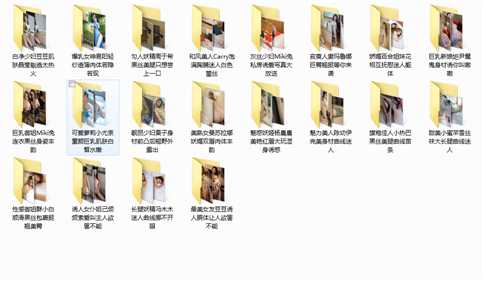ImagePipeline
使用scrapy框架我们除了要下载文本,还有可能需要下载图片,scrapy提供了ImagePipeline来进行图片的下载。
ImagePipeline还支持以下特别的功能:
1 生成缩略图:通过配置IMAGES_THUMBS = {‘size_name‘: (width_size,heigh_size),}
2 过滤小图片:通过配置IMAGES_MIN_HEIGHT和IMAGES_MIN_WIDTH来过滤过小的图片。
具体其他功能可以看下参考官网手册:https://docs.scrapy.org/en/latest/topics/media-pipeline.html.
1 在spider中爬取需要下载的图片链接,将其放入item中的image_urls.
2 spider将其传送到pipieline
3 当ImagePipeline处理时,它会检测是否有image_urls字段,如果有的话,会将url传递给scrapy调度器和下载器
4 下载完成后会将结果写入item的另一个字段images,images包含了图片的本地路径,图片校验,和图片的url。
只爬第一页

第一步:items.py
import scrapy
class Happy4Item(scrapy.Item):
# define the fields for your item here like:
# name = scrapy.Field()
image_urls = scrapy.Field()
images = scrapy.Field()
爬虫文件lol.py
# -*- coding: utf-8 -*-
import scrapy
from happy4.items import Happy4Item
class LolSpider(scrapy.Spider):
name = ‘lol‘
allowed_domains = [‘lol.tgbus.com‘]
start_urls = [‘http://lol.tgbus.com/tu/yxmt/‘]
def parse(self, response):
li_list = response.xpath(‘//div[@class="list cf mb30"]/ul//li‘)
for one_li in li_list:
item = Happy4Item()
item[‘image_urls‘] =one_li.xpath(‘./a/img/@src‘).extract()
yield item
最后 settings.py
BOT_NAME = ‘happy4‘
SPIDER_MODULES = [‘happy4.spiders‘]
NEWSPIDER_MODULE = ‘happy4.spiders‘
# Crawl responsibly by identifying yourself (and your website) on the user-agent
USER_AGENT = ‘Mozilla/5.0 (compatible; MSIE 9.0; Windows NT 6.1; Trident/5.0‘
# Obey robots.txt rules
ROBOTSTXT_OBEY = False
ITEM_PIPELINES = {
‘scrapy.pipelines.images.ImagesPipeline‘: 1,
}
IMAGES_STORE = ‘images‘
不需要操作管道文件,就可以爬去图片到本地

极大的减少了代码量.
注意:因为图片管道会尝试将所有图片都转换成JPG格式的,你看源代码的话也会发现图片管道中文件名类型直接写死为JPG的。所以如果想要保存原始类型的图片,就应该使用文件管道。
要求爬取的就是这个网站

这个网站是有反爬的,当你直接去下载一个图片的时候,你会发现url被重新指向了别处,或者有可能是直接报错302,这是因为它使用了referer这个请求头里的字段,当你打开一个图片的url的时候,你的请求头里必须有referer,不然就会被识别为爬虫文件,禁止你的爬取,那么如何解决呢?
手动在爬取每个图片的时候添加referer字段。

xingan.py
# -*- coding: utf-8 -*-
import scrapy
from happy5.items import Happy5Item
import re
class XinganSpider(scrapy.Spider):
name = ‘xingan‘
allowed_domains = [‘www.mm131.com‘]
start_urls = [‘http://www.mm131.com/xinggan/‘]
def parse(self, response):
every_html = response.xpath(‘//div[@class="main"]/dl//dd‘)
for one_html in every_html[0:-1]:
item = Happy5Item()
# 每个图片的链接
link = one_html.xpath(‘./a/@href‘).extract_first()
# 每个图片的名字
title = one_html.xpath(‘./a/img/@alt‘).extract_first()
item[‘title‘] = title
# 进入到每个标题里面
request = scrapy.Request(url=link, callback=self.parse_one, meta={‘item‘:item})
yield request
# 每个人下面的图集
def parse_one(self, response):
item = response.meta[‘item‘]
# 找到总页数
total_page = response.xpath(‘//div[@class="content-page"]/span[@class="page-ch"]/text()‘).extract_first()
num = int(re.findall(‘(\d+)‘, total_page)[0])
# 找到当前页数
now_num = response.xpath(‘//div[@class="content-page"]/span[@class="page_now"]/text()‘).extract_first()
now_num = int(now_num)
# 当前页图片的url
every_pic = response.xpath(‘//div[@class="content-pic"]/a/img/@src‘).extract()
# 当前页的图片url
item[‘image_urls‘] = every_pic
# 当前图片的refer
item[‘referer‘] = response.url
yield item
# 如果当前数小于总页数
if now_num < num:
if now_num == 1:
url1 = response.url[0:-5] + ‘_%d‘%(now_num+1) + ‘.html‘
elif now_num > 1:
url1 = re.sub(‘_(\d+)‘, ‘_‘ + str(now_num+1), response.url)
headers = {
‘referer‘:self.start_urls[0]
}
# 给下一页发送请求
yield scrapy.Request(url=url1, headers=headers, callback=self.parse_one, meta={‘item‘:item})
items.py
import scrapy
class Happy5Item(scrapy.Item):
# define the fields for your item here like:
# name = scrapy.Field()
image_urls = scrapy.Field()
images = scrapy.Field()
title = scrapy.Field()
referer = scrapy.Field()
pipelines.py
from scrapy.pipelines.images import ImagesPipeline
from scrapy.exceptions import DropItem
from scrapy.http import Request
class Happy5Pipeline(object):
def process_item(self, item, spider):
return item
class QiushiImagePipeline(ImagesPipeline):
# 下载图片时加入referer请求头
def get_media_requests(self, item, info):
for image_url in item[‘image_urls‘]:
headers = {‘referer‘:item[‘referer‘]}
yield Request(image_url, meta={‘item‘: item}, headers=headers)
# 这里把item传过去,因为后面需要用item里面的书名和章节作为文件名
# 获取图片的下载结果, 控制台查看
def item_completed(self, results, item, info):
image_paths = [x[‘path‘] for ok, x in results if ok]
if not image_paths:
raise DropItem("Item contains no images")
return item
# 修改文件的命名和路径
def file_path(self, request, response=None, info=None):
item = request.meta[‘item‘]
image_guid = request.url.split(‘/‘)[-1]
filename = ‘./{}/{}‘.format(item[‘title‘], image_guid)
return filename
settings.py
BOT_NAME = ‘happy5‘
SPIDER_MODULES = [‘happy5.spiders‘]
NEWSPIDER_MODULE = ‘happy5.spiders‘
# Crawl responsibly by identifying yourself (and your website) on the user-agent
USER_AGENT = ‘Mozilla/5.0 (compatible; MSIE 9.0; Windows NT 6.1; Trident/5.0‘
# Obey robots.txt rules
ROBOTSTXT_OBEY = False
ITEM_PIPELINES = {
# ‘scrapy.pipelines.images.ImagesPipeline‘: 1,
‘happy5.pipelines.QiushiImagePipeline‘: 2,
}
IMAGES_STORE = ‘images‘
得到图片文件:

这种图还是要少看。
原文:https://www.cnblogs.com/xiaozx/p/10776694.html